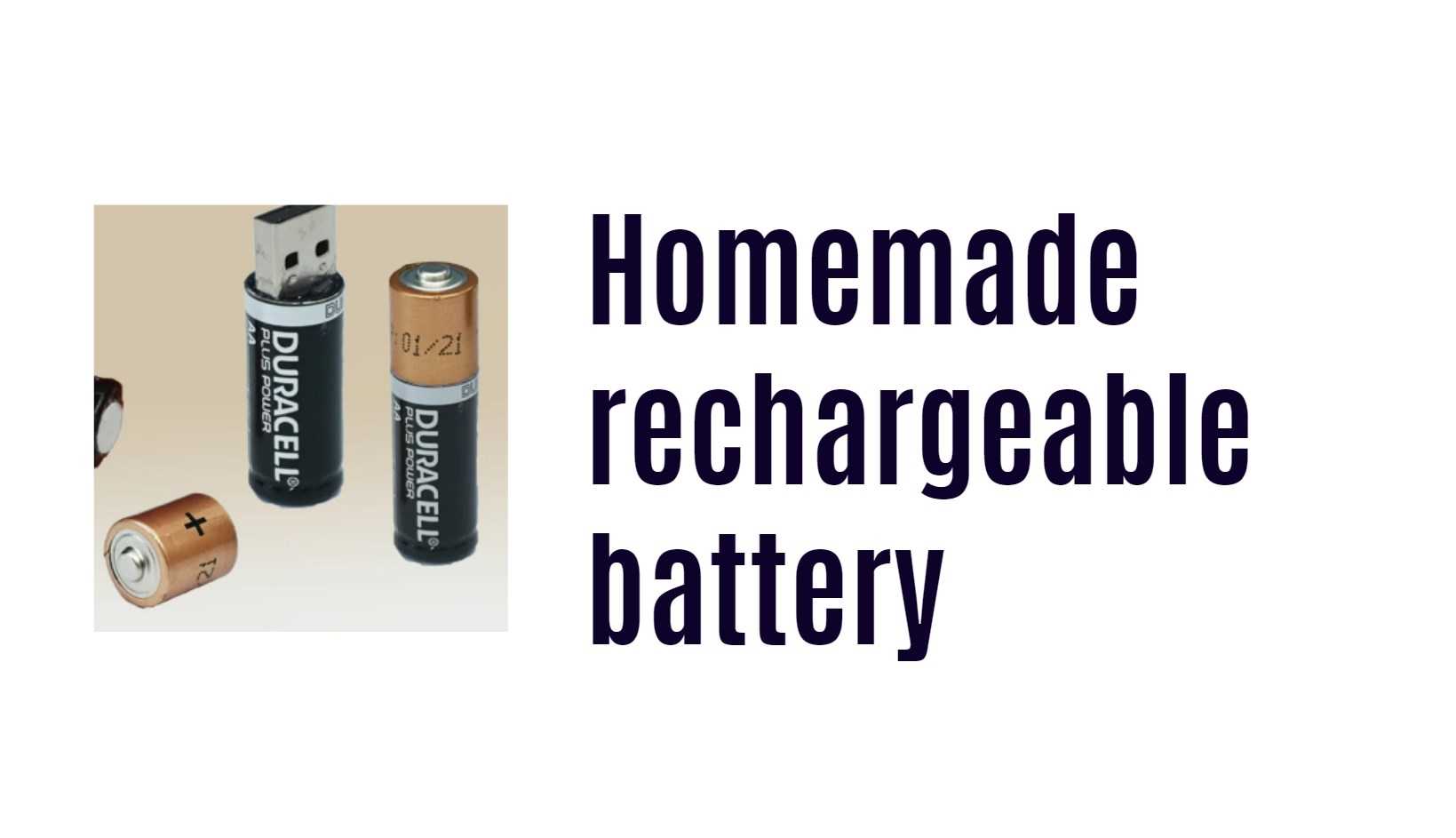Welcome to the world of DIY rechargeable batteries – where innovation meets sustainability! If you’ve ever wondered about creating your own power source from scratch, this guide is for you. Say goodbye to constantly buying disposable batteries and hello to a more eco-friendly and cost-effective solution. Get ready to roll up your sleeves, gather some basic materials, and embark on a journey towards crafting your very own homemade rechargeable batteries. Let’s dive in!
The Benefits of Making Your Own Rechargeable Batteries
When it comes to making your own rechargeable batteries, the benefits are truly electrifying. Not only do you have the satisfaction of creating something from scratch, but you also have full control over the quality and performance of your batteries.
One significant advantage is cost savings. By DIY-ing your batteries, you can save money in the long run compared to constantly buying disposable ones. Plus, you can customize the size and capacity of your homemade batteries to suit your specific needs.
Another benefit is environmental impact. Homemade rechargeable batteries reduce waste since they can be recharged multiple times before needing replacement. This eco-friendly approach helps decrease battery pollution and minimizes harmful chemicals entering landfills.
Additionally, making your own rechargeable batteries allows for experimentation with different materials and designs, giving you a hands-on learning experience in battery technology. So why not give it a try and power up with homemade energy solutions?
Materials and Tools Needed for DIY Batteries
When it comes to creating your own rechargeable batteries at home, having the right materials and tools is essential. You’ll need a few key components to get started on this DIY project.
First off, you’ll require battery cells or modules, which can be purchased online or salvaged from old electronics. Next, gather nickel strips for connecting the cells together in series or parallel configurations.
To assemble the battery pack, you’ll need an appropriate holder or casing that fits the size of your cells. Additionally, make sure to have a soldering iron and solder wire on hand for secure connections between components.
A multimeter will come in handy for testing voltage levels and ensuring proper functionality of your homemade battery. Don’t forget about safety gear like gloves and goggles to protect yourself during assembly.

Step-by-Step Guide to Creating a Homemade Rechargeable Battery
Let’s dive into the exciting process of creating your very own homemade rechargeable battery!
First, gather all the materials and tools you’ll need for this DIY project. You’ll typically require items like lithium-ion cells, a soldering iron, nickel strips, and a battery management system.
Next, carefully assemble the lithium-ion cells in series or parallel depending on your desired voltage and capacity. Ensure proper insulation and connections to avoid short circuits.
Then, solder the nickel strips to interconnect the cells securely. Pay close attention to detail as each connection plays a crucial role in the battery’s performance and safety.
After that, incorporate a suitable battery management system to monitor charging and discharging processes effectively. This component is vital for maintaining optimal battery health over time.
Test your homemade rechargeable battery to ensure it functions correctly before putting it to use in your devices. Enjoy the satisfaction of powering electronics with something you created yourself!
Tips for Proper Maintenance and Care of Homemade Batteries
Proper maintenance and care of homemade batteries are essential to ensure their longevity and efficiency. Make sure to store your homemade rechargeable batteries in a cool, dry place away from direct sunlight or extreme temperatures. This will help prevent any damage or degradation to the battery cells.
Regularly check the voltage levels of your homemade batteries using a multimeter to gauge their performance. If you notice any significant drops in voltage output, it may be time for a recharge or potentially replacing the battery cells if they are worn out.
When charging your homemade batteries, always follow the recommended charging guidelines provided with the specific type of battery chemistry you are using. Overcharging can lead to overheating and potential safety hazards.
Additionally, avoid exposing your homemade batteries to moisture or water as this can cause short circuits and damage the internal components. Proper handling and care will not only extend the life of your DIY rechargeable batteries but also ensure safe operation during use.
Comparing the Cost and Performance of Homemade vs Store-Bought Batteries
When it comes to comparing homemade rechargeable batteries with store-bought ones, there are a few key factors to consider. Cost-wise, creating your own batteries can be more budget-friendly in the long run as you have control over the materials used and can often repurpose items you already have at home.
In terms of performance, homemade batteries may not always match the capacity and consistency of commercially available options. Store-bought batteries undergo rigorous testing and quality control measures that ensure reliable power output for various devices.
However, DIY rechargeable batteries offer customization possibilities and a sense of accomplishment from building something functional from scratch. It’s a great way to explore renewable energy concepts and reduce waste by reusing components.
Whether you choose homemade or store-bought batteries will depend on your specific needs, budget constraints, and willingness to experiment with sustainable alternatives.
Eco-Friendly Alternatives: Using Recycled Materials for Homemade Batteries
Looking for a sustainable way to power your devices? Consider using recycled materials to create homemade rechargeable batteries. Not only is this environmentally friendly, but it also gives new life to old items that would otherwise end up in landfills.
You can repurpose things like aluminum cans, copper wire, and even old electronics to make your own DIY batteries. By reusing these materials, you reduce waste and lessen the demand for new resources.
Get creative with your designs and experiment with different combinations of recycled parts. Who knows, you might discover a unique formula that works even better than store-bought options!
Not only are you reducing your carbon footprint by utilizing recycled materials, but you’re also saving money in the long run. Homemade batteries made from reused components can be just as effective as commercial ones at a fraction of the cost.
So next time you need a battery replacement, think twice before heading to the store. Try making your own eco-friendly alternative using recycled materials – it’s good for the planet and your wallet!
Conclusion
In the fast-paced world of technology, homemade rechargeable batteries offer a sustainable and cost-effective solution for powering our devices. By following this guide and creating your own DIY batteries, you not only save money but also contribute to reducing electronic waste.
Remember, proper maintenance is key to maximizing the lifespan of your homemade rechargeable batteries. With a little care and attention, they can serve you well for a long time.
So why not give it a try? Experiment with recycled materials, follow our step-by-step guide, and enjoy the benefits of DIY rechargeable batteries. Embrace sustainability while powering up your gadgets – it’s a win-win situation!
Related Posts
- Zapping the Voltage: A Simple Guide to Multimeter Testing for AAA Battery Voltage
- Will Voltage Affect Battery Performance?
- Will solid-state batteries replace lithium?
- Will Batteries Last Longer in the Freezer? Answers to Your Freezing Battery Myths!
- Will batteries last longer in the freezer?
- Will a 42V Charger Work on a 48V Battery? Understanding the Risks and Best Practices



